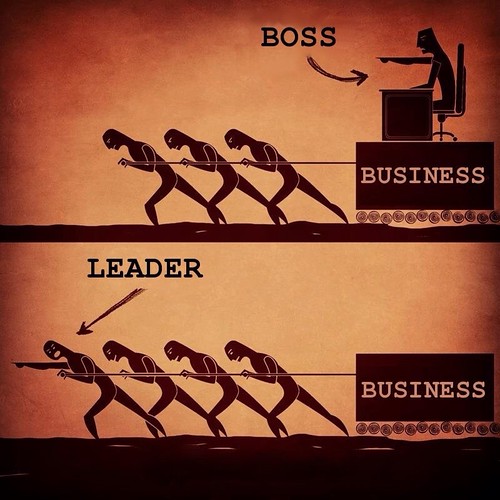In today’s rapidly evolving business landscape, the correlation between effective leadership and organizational success has never been more apparent. Leadership training, once considered a luxury reserved for executive-level management, has emerged as a critical driver of business growth and sustainability. This comprehensive exploration delves into why investing in leadership development is not just beneficial but essential for modern businesses aiming to thrive in an increasingly competitive market.
The Foundation: Understanding Modern Leadership Challenges
Today’s business leaders face unprecedented challenges. From managing remote teams and navigating digital transformation to addressing sustainability concerns and maintaining work-life balance, the complexity of leadership roles has increased exponentially. Traditional management approaches often fall short in addressing these modern challenges, making continuous leadership development crucial for organizational success.
The Direct Impact on Business Growth
Enhanced Decision-Making Capabilities
Leadership training significantly improves decision-making processes within organizations. Well-trained leaders are better equipped to:
– Analyze complex situations from multiple perspectives
– Make data-driven decisions while considering human factors
– Navigate uncertainty with confidence and clarity
– Balance short-term needs with long-term strategic objectives
These enhanced capabilities directly translate into better business outcomes, reduced risks, and more sustainable growth trajectories.
Improved Team Performance
Leaders who undergo comprehensive training programs demonstrate marked improvement in their ability to:
– Motivate and engage team members effectively
– Create and maintain high-performing teams
– Address conflicts constructively
– Foster innovation and creativity within their teams
Research shows that teams led by well-trained leaders typically demonstrate 21% higher productivity compared to those led by untrained managers.
Enhanced Employee Retention
One of the most significant impacts of leadership training manifests in employee retention rates. Organizations with strong leadership development programs typically experience:
– 25% lower turnover rates
– Higher employee satisfaction scores
– Improved workplace culture
– Stronger employer branding
The cost savings associated with reduced turnover alone often justify the investment in leadership training programs.
Key Components of Effective Leadership Training
Strategic Thinking and Vision Development
Modern leadership training programs emphasize the development of strategic thinking capabilities. Leaders learn to:
– Identify emerging market trends and opportunities
– Develop and communicate compelling organizational visions
– Create actionable strategic plans
– Align team efforts with organizational objectives
Emotional Intelligence and People Management
Successful leadership in the modern era requires high emotional intelligence. Training programs focus on developing:
– Self-awareness and emotional regulation
– Empathy and relationship management skills
– Active listening and communication abilities
– Cultural intelligence and diversity awareness
Change Management and Adaptability
In an era of constant change, leaders must be adept at managing transformation. Training programs address:
– Change management methodologies
– Risk assessment and mitigation strategies
– Innovation management
– Organizational resilience building
Measuring the ROI of Leadership Training
Quantitative Metrics
Organizations can measure the return on investment in leadership training through various metrics:
– Revenue growth rates
– Employee productivity indicators
– Customer satisfaction scores
– Market share improvements
– Reduced turnover costs
Qualitative Indicators
Equally important are the qualitative improvements observed:
– Enhanced workplace culture
– Improved team collaboration
– Better stakeholder relationships
– Increased innovation and creativity
– Stronger organizational reputation
Implementation Strategies for Effective Leadership Training
Customization and Relevance
Successful leadership training programs are tailored to:
– Industry-specific challenges and opportunities
– Organizational culture and values
– Current skill gaps and future needs
– Individual leader development requirements
Continuous Learning Approach
Rather than one-off training events, effective programs embrace:
– Regular skill assessment and development
– Mentoring and coaching relationships
– Peer learning opportunities
– Practical application exercises
Technology Integration
Modern leadership training leverages technology through:
– Virtual reality simulations
– Online learning platforms
– Mobile learning applications
– AI-powered personalized learning paths
Overcoming Common Challenges
Resource Allocation
Organizations often struggle with:
– Budget constraints
– Time management
– Staff availability
– Resource prioritization
Successful implementation requires careful planning and clear demonstration of potential returns.
Resistance to Change
Common resistance points include:
– Skepticism about training effectiveness
– Comfort with existing methods
– Fear of change
– Time commitment concerns
Addressing these concerns through clear communication and demonstrated results is crucial.
Future Trends in Leadership Training
Emerging Focus Areas
Future leadership training programs are likely to emphasize:
– Digital leadership capabilities
– Sustainable business practices
– Global perspective development
– Crisis management skills
Evolving Delivery Methods
Training delivery continues to evolve through:
– Hybrid learning models
– Microlearning approaches
– Gamification
– Social learning platforms
Conclusion
Leadership training is not merely a developmental tool but a strategic imperative for business growth. Organizations that invest in comprehensive leadership development programs position themselves for sustainable success in an increasingly complex business environment. The returns manifest not only in improved financial performance but also in enhanced organizational culture, innovation capacity, and market positioning.
As we move forward, the importance of leadership training will only increase. Organizations that recognize this trend and act proactively to develop their leadership capabilities will find themselves better equipped to navigate future challenges and capitalize on emerging opportunities. The question is no longer whether to invest in leadership training, but how to optimize these investments for maximum impact on business growth and success.
Remember, effective leadership is not an innate quality but a skill that can be developed and refined through proper training and continuous learning. As businesses continue to evolve and face new challenges, the role of leadership training in driving growth and success will become increasingly critical.
